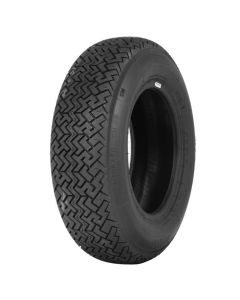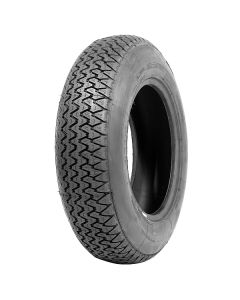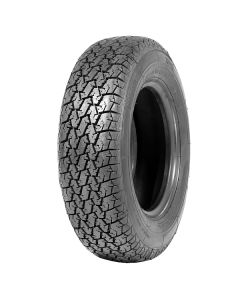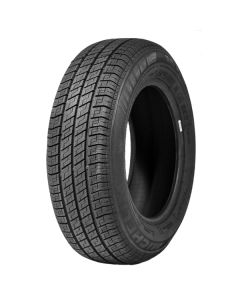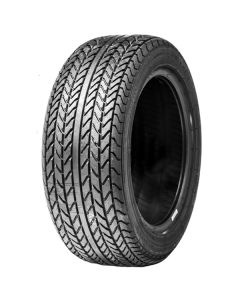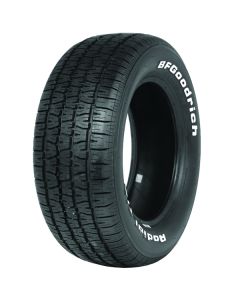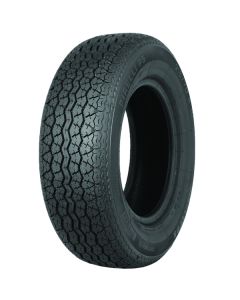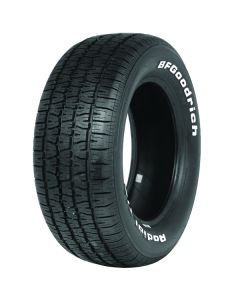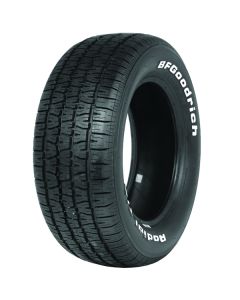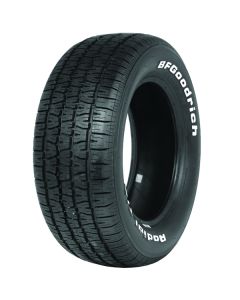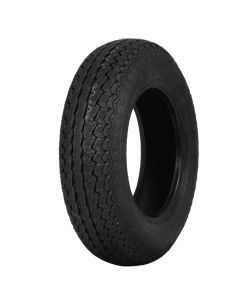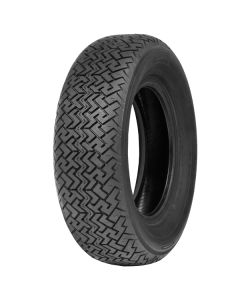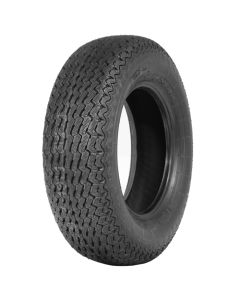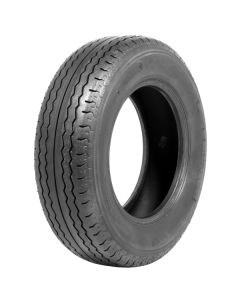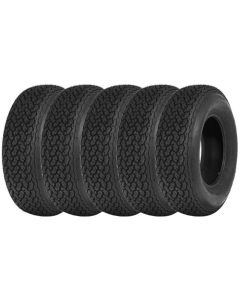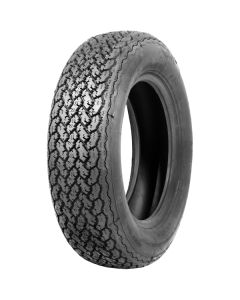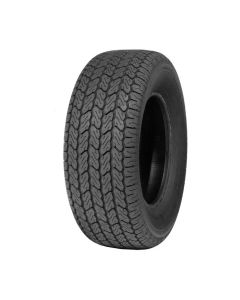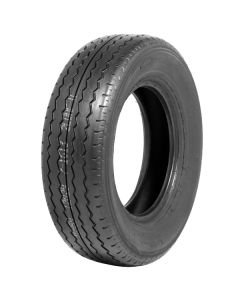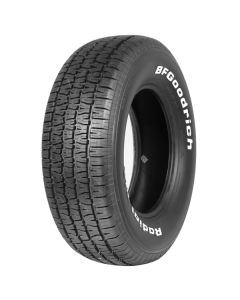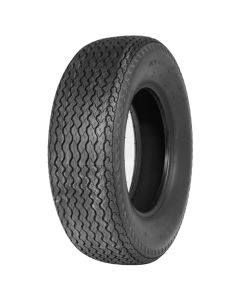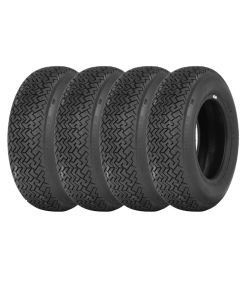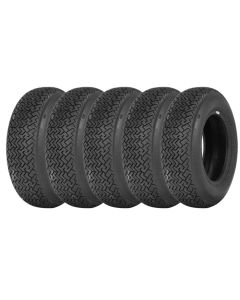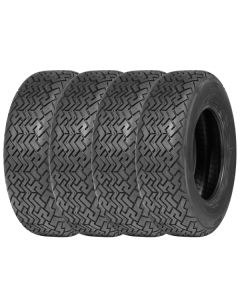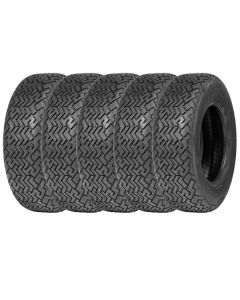Chrysler Dodge Charger Tyres
Dodge Charger Classic 1966–1987
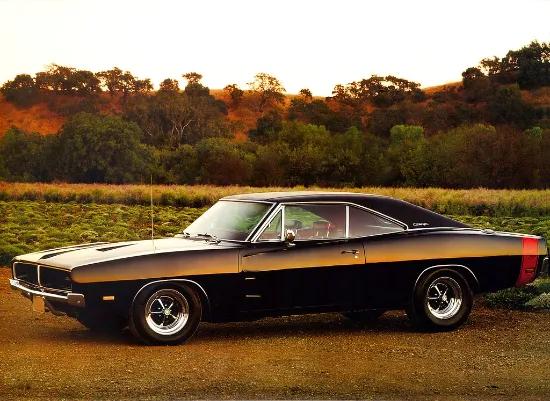
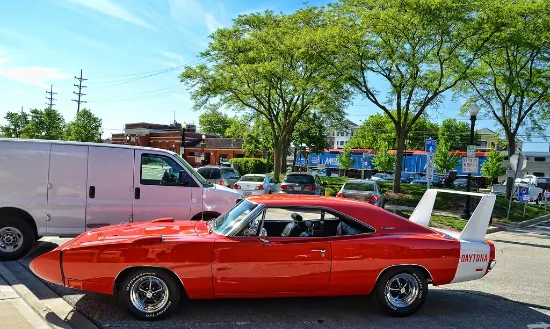
- A MK1 and MK2 Dodge Charger's fitted a 7.75 - 14 and later low profile F70-14, the 7.75-14 full profile is no longer made, and though there are still crossply F/70-14 tyres available, we would encourage moving onto a radial alternative.
- The tyre that is popular for a MK1 and MK2 Dodge Charger on 14" wheels is the 215/70 SR 14 B.F.Goodrich Radial T/A. As a muscle car tyre with raised white letters.
- However to improve the handling we would suggest that the 215/70VR14 Michelin XWX will improve the progressive handling and directional stability at high speeds.
- The MK2 426 V8 engined Charger and the 1969 Dodge Charger Daytona, in particular, had 15" wheels and fitted F70-15 tyres.
- We would recommend again moving onto a 215/70 - 15 radial as an alternative that will make your classic Dodge charger better suited to modern roads.
- If you have a MK1 or MK2 charger on 15" wheels the 215/70 15 Pirelli P5 or the 215/70VR15 Michelin XWX will give phenomenal handling to the car, but if you want the authentic period muscle car look, the 215/70 -15 B.F Goodrich Radial T/A is the tyre for you.
- The MK3 Charger R/T, the 440 Rallye Charger, the 360 HP engined Charger, and Charger 500 fitted G70-14 tyres we again would suggest going radial with size 225/70-14. We recommend fitting the 225/70 SR 14 B.F.Goodrich Radial T/A.
- The MK3 Charger Wagon fitted HR78 - 14, instead, we recommend the size 245/60 R 14 as an alternative. The 245/60 SR 14 B.F.Goodrich Radial T/A as the radial tyre for the MK3 Charger Wagon, however worth noting it will be slightly smaller in diameter.
- Other MK3 Chargers fitted F78-14 for which we suggest the 215/70 R 14 B.F Goodrich is a brilliant fit for this car.
- The Mk4 Charger Special edition fitted GR-78 15 which is not currently made by classic tyre manufacturers. 225/70 R 15 is the size we recommend fitting as a radial alternative. B.F Goodrich has their 225/70 SR 15 B.F.Goodrich Radial T/A which is what we recommend fitting in its place as it is a fantastic tyre that really brings out the best in a classic muscle car.
- The other MK4 Chargers fitted G78-14, We recommend fitting the 225/70 SR 14 B.F.Goodrich Radial T/A, as 225/70 R 14 is a great radial alternative size.
- The Mk5 Chargers on 14" wheels fitted 195/60 14 tyres and the Chargers on 13" wheels fitted 165/80 -13 and 175/75 - 13 until 1985 when they exclusively fitted 165-13. Alternatively, you could fit 185/70-13 Tyres as a low profile option.
- The Dodge Shelby Charger fitted 205/50 R 15. The 205/50 VR 15 PIRELLI CINTURATO P7 is the best tyre for the Shelby Charger.
Dodge Charger Tyre Pressures
| Model | Generation | Front (Psi) | Rear (Psi) |
|---|---|---|---|
| Charger (All) | MK1 | 30 | 30 |
| Charger 6 Cyl. | MK2 | 32 | 32 |
| Charger 8 Cyl. | MK2 | 28 | 28 |
| Charger V8 Engine | MK2 | 28 | 28 |
| Charger R/T | MK2 | 26 | 26 |
| Charger 500 | MK2 | 26 | 26 |
| Charger Daytona | MK2 | 26 | 26 |
| Charger Super Bee | MK3 | 28 | 28 |
| Charger w/ 225, 318, 340, 360, & 440 eng. | MK3 | 30 | 30 |
| Charger w/ 400 eng. | MK3 | 28 | 28 |
| Charger Wagon | MK3 | 22 | 32 |
| Charger w/ 360HP eng. | MK3 | 28 | 28 |
| Charger w/ 440 Rallye | MK3 | 28 | 28 |
| Charger w/ 318 & 360 eng. | MK4 | 32 | 32 |
| Charger w/ 400 eng. | MK4 | 28 | 28 |
| Charger Special Edition w/ 318 & 360 eng. | MK4 | 32 | 32 |
| Charger Special w/ 400 eng. | MK4 | 30 | 30 |
| Charger (All) | MK5 | 35 | 35 |
History of the Dodge Charger
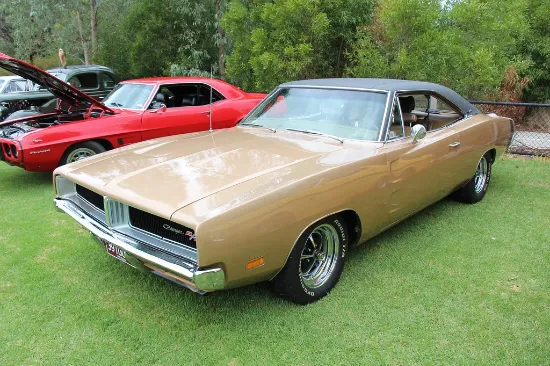
In 1964 the first Pony Car hit the market, kicking off what would be a huge craze in the American automobile industry. The Plymouth Barracuda was a fastback coupe that was remarkably similar to the Plymouth Valiant, due to a very limited budget for the design (stemming from Chrysler's poor financial position) the car received a mixed reaction from consumers. This coupled with the arrival of one of the biggest names in automobile history, the Ford Mustang, led to sales never really taking off for the Barracuda, costing Chrysler a major opportunity if cards were played right. This led to the development of the Charger, kicking off Chrysler's resurgence in the market with another one of the most memorable cars in American engineering. Dodge wanted to further explore the emerging Pony Car and personal luxury car market, specifically wanting to meet the mark between the Ford Mustang and Thunderbird without making a head to head competitor in performance to other pony cars, it did however feature Chrysler's 426 Hemi V8 as an engine choice, a brilliant engine used in NASCAR and also used in the Jensen Interceptor. This meet-in-the-middle selling point Charger made was a niche that led to success for Chrysler / Dodge.
When the Pony Car market took off in the next few years, as General Motors launched the Chevrolet Camaro and the Pontiac Firebird, and AMC released the Javelin, all spectacular examples of American muscle car engineering and all major competition for Chrysler to go against. This led to Dodge branching the Charger into a further performance-based market with their second generation in 1968 with the release of the R/T (Road/Track) which came with a 440 Magnum or 426 Hemi engine. Many will remember this model of R/T for the car chase in Bullit, one of the best Car Chases in cinema history, this one scene led to fantastic sales for Chrysler as they brought in 96,100 Charger sales in the '68 model year, 17,000+ of those being R/T models.
1971 marked the arrival of the third generation of Charger, in which the Coronet and Charger lines were merged into one, with 4 door models being dubbed the Coronet, and the 2 door models, the Charger. This generation added optional hidden headlights, a rear spoiler, and the "Ramcharger" bonnet (or "hood" if you're American) which featured a pop-up hood scoop that was operated by a vacuum switch under the dashboard, although this would be dropped in the following year's facelift among a few other key changes. In the '72 model year, revisions to the engines were made to allow the use of regular unleaded or leaded petrol as a pose to the leaded premium fuel used before the change due to 1972 Emissions Regulations. The 73' and 74' models featured subtle differences in the grille and headlights (Including the removal of pop-up headlights) and had different, larger quarter windows.
The 1975 model year Charger picked up on the sales increase seen in 1974's shift towards the personal luxury car market and gave it a rather drastic reworking. The Charger now shared a B platform-based body with the Chrysler Cordoba and was initially only released as the Charger SE model. 1975 sales reached a total of £30,812. The body's super square design led to the Dodge team having to get permission from NASCAR to use their sheet metal from the 1974 model year until 1978 when the Dodge Magnum became the Chargers' replacement as the B-Body personal luxury car.
Following a hiatus of production for the Charger nameplate, the Charger name would be brought back midway through 1981 as a hatchback coupe that was a performance package for the Dodge Omni 024 called the Charger 2.2. Carroll Shelby developed his own version of this car called the Dodge Shelby Charger in 1983. Shelby also purchased 1000 of the final dodge chargers and converted them into the Charger GLHS line, although none of the 4 door models was badged as Dodges, only the 5-door GLH Omni does.
Production of the Charger would cease for 20 years until its 2006 model year resurgence as a 4 door sedan. The Charger is one of the most popular and recognisable names in American motoring history with history within NASCAR and for being one of the biggest names to come out of the pony car craze. To this day there are many clubs and enthusiast groups around America and the world over that are devoted to these cars.


